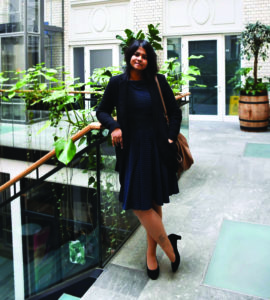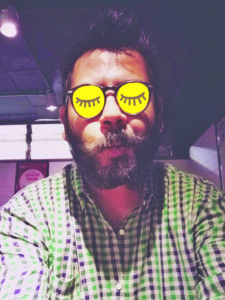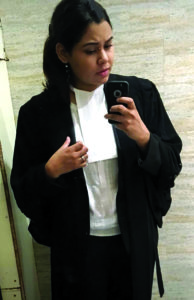Freed from old-world ideas on dressing formally for office, millennials make sure they convey professionalism in how they show up for work
A ballerina shows off her sharp moves in a crisp tutu. A Bharat Natyam dancer poses in a carefully pleated silk skirt. Various performers use their ensembles to get into the mood of their performance.
But even in our regular workday routine, the way we choose to show up in the office speaks volumes about how we perceive our work and the role our personal dress sense plays in the work we do.
There was a time when formal wear was a must for every office goer. However, with the arrival of new businesses and office spaces to support such occupations, we have seen a shift in how people choose to, or let us say, are allowed to dress even in the most formal environments.
To get a picture of how millennials conduct themselves in their new age offices, Patriot speaks to five young professionals, who talk about their ‘official’ clothing decision-making and what impacts the same.
Himanika Arora, in her mid-20s, recently took up a job as a computer science consultant with a start-up based in Gurugram. She uses the term ‘decent casuals’ to describe her selection of work-wear on most days. “On client meet days, we go for formal wear: I prefer straight mid-calf dresses for that,” explains Arora. When it comes to business meetings, she believes that she needs to come off as modest yet confident, thus a solid dark-coloured dress works best for her.
“Honestly, very few firms have dress codes these days,” adds the Delhi-based consultant who recently finished a big project with her organisation — and all the client meetings it took to get there.
Formal wear takes on a much larger role of relatability, approachability and productivity. If you ever noticed Barack Obama’s address to a crowd of working class Americans, he would most likely wear no jacket and roll up his shirt sleeves. A subtle play of attire, silently communicating to the audience that he too is a hard worker. Narendra Modi portrays his love for the country’s culture in his iconic kurta pyjama even as he meets suited and booted leaders from around the world. CEOs like Mark Zuckerberg continue to wear casual clothes for the time it allows him to focus on important decisions.
Annanya Bhowmick, a service designer who has worked on projects like the State Bank’s YONO application as part of the IBM team and now at SAP’s headquarters in Germany, elucidates on how office wear is an important element in her work life. “My outfit really determines my attitude in my office. Specially for us designers, we are thinkers and doers at the same time. We need that space and comfort in what we wear”, shares Bhowmick. Her usual office wear consists of cardigans, denims and comfortable shoes whereas during presentations, she prefers to keep it ‘traditional formal.’

“When I am in front of a client, I want to come off as a leader and a professional designer. First of all, what I wear helps me cultivate a mood for me to present an idea and then for my clients to believe in it. I certainly don’t want to do it in a pair of jeans – rather, a tailored dress with heels changes my demeanor”, says Bhowmick, who is convinced about how seriously clothing is taken and the role it plays in one’s success.
As a meticulous young expert in her 20s, she is driven and sees herself at a good position, doing some important work in the near future. “Between a design director of age 35 and 55, the former is definitely more organised and well dressed”, adds Bhowmick.
Research shows that we size people up as soon as they walk into a room, first thing being their clothes. The question is: How to dress to impress? Dressing smart is indeed a play between what suits one’s person style and the work situation. Instead of following a select path, one must experiment and find a unique way to carry themselves in an institutional setting.

Akash Hans, a Bengaluru-based creative director in his mid- 30s, has always taken it easy on the dressing front. Seen mostly in linen pants and T-shirts, he takes the liberty to dress informally for the freedom he displays in the nature of his work. “I work with a creative team and I like being approachable. My dress sense informs my teams behavior towards me,” adds Hans who has worked on ads for top brands like Flipkart, Ikea, Proyog and Paperboat.
As for Aruna, a Delhi-based lawyer, the idea of work wear is limited to crisp white shirts, black trousers and the customary black robe to go with it. “Our uniform is a part of our job. Almost always we are at the court or dealing with clients. The dress says how serious we are about our profession,” says the legal advisor in her late 20s.

“I think it also depends on the local environment we practise in. It depends on the people we serve; they need to find us relatable. A lawyer in a part of Haryana may wear a salwar- kameez. In Delhi, we have to present ourselves according to our clientele here,” says Aruna, who likes to go by the book and follow the exact dress code that is required in her line of profession. “I don’t really miss dressing up in any other way,” adds the young lawyer when asked if she favours the dress code in her profession.
As clothes tell a story about us and our likes, there is a lot we can control in our work lives with a planned wardrobe. It isn’t about fashion as much as it is about a non-verbal communication that one can ensure in the workplace.

Salil Gupta is a brand manager at Lovestruckcow, an organisation that provides branding and marketing services to lifestyle brands. “My usual way of dressing is casual, specially for a boutique arrangement like ours. There is not much fuss about clothes. All our clients have a certain taste when it comes to dressing, so even in those meetings, I keep my style the same, perhaps a bit cleaner,” shares Gupta who handles social presence for top Indian clothing brands like Péro and Shades of India.





